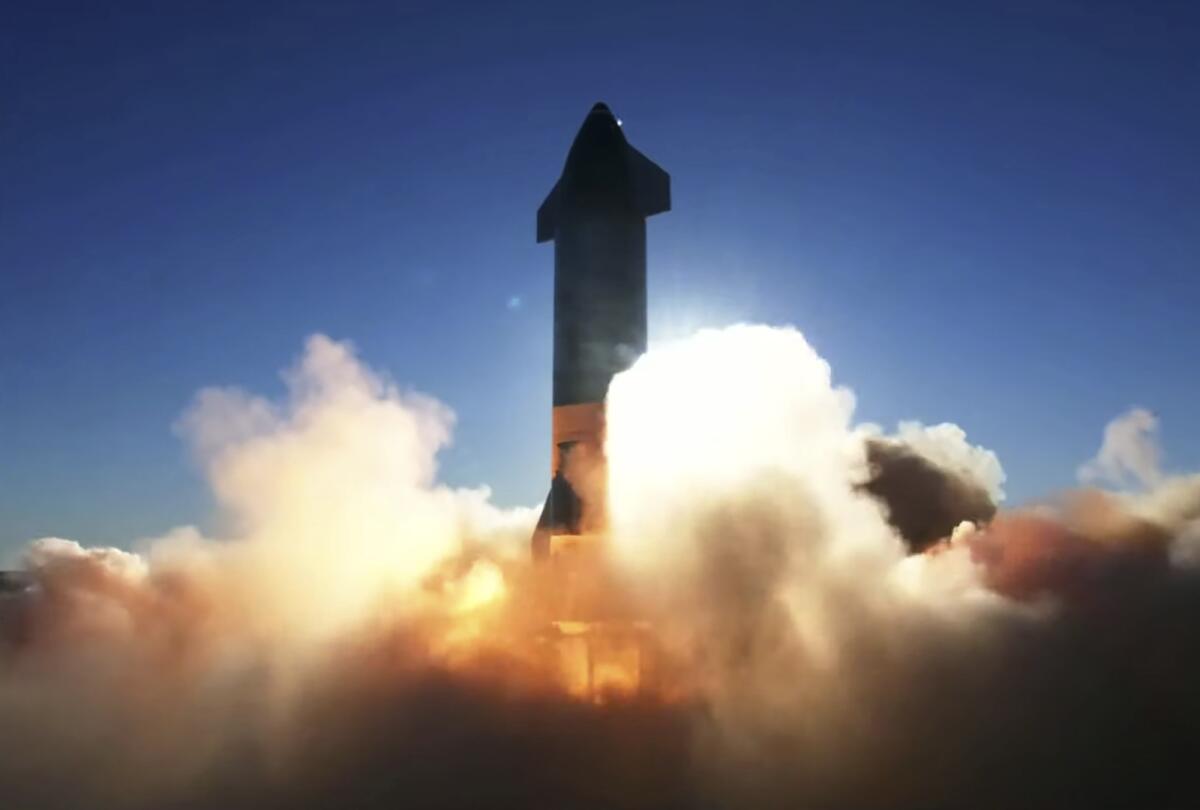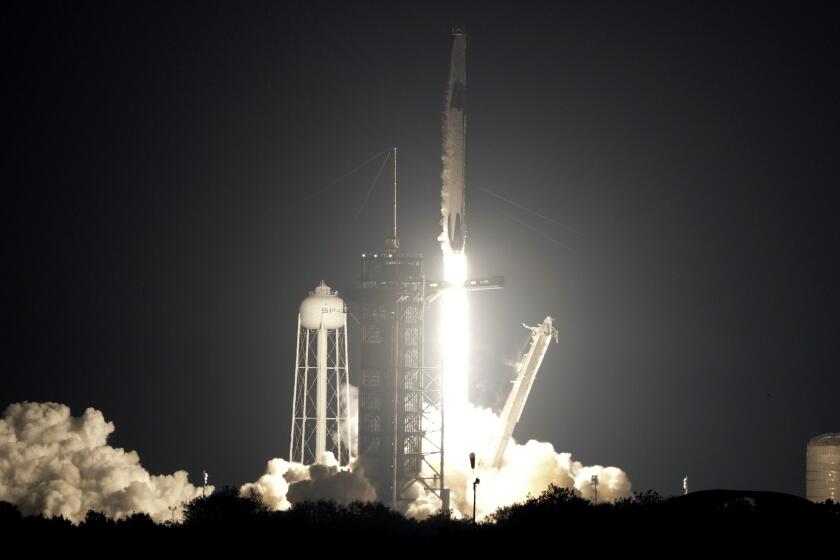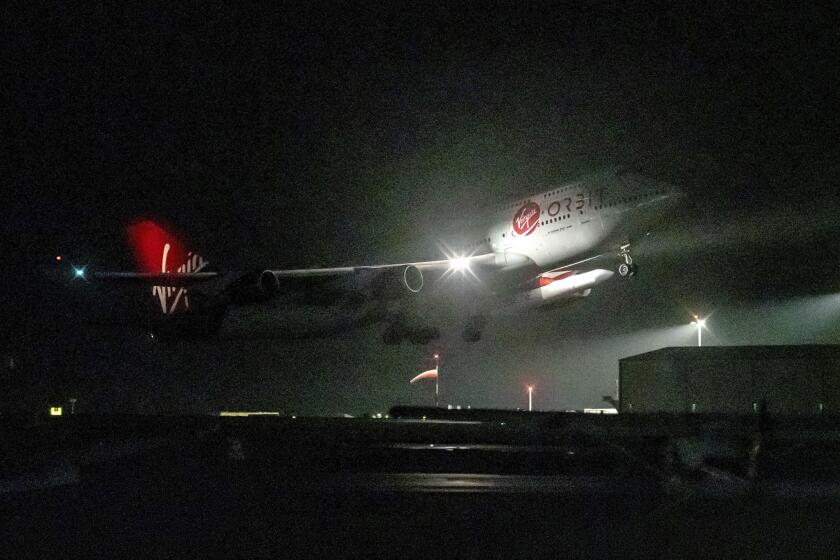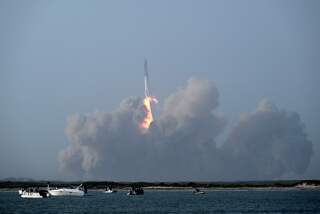Muskâs SpaceX gets U.S. approval to launch Starship rocket

Elon Muskâs SpaceX received U.S. government approval to launch its next-generation Starship rocket, a key milestone in the companyâs quest to send humans to the moon and eventually Mars.
The Federal Aviation Administration granted the license to the Hawthorne company, formally Space Exploration Technologies Corp., on Friday, allowing it to launch the rocket from its Starbase facility in Boca Chica, Texas.
SpaceX said it plans to launch its uncrewed Starship as early as 5 a.m. Pacific time Monday, in line with the companyâs previous guidance even before it had secured FAA approval. It will have a 150-minute launch window, the company said in a statement.
âAfter a comprehensive license evaluation process, the FAA determined SpaceX met all safety, environmental, policy, payload, airspace integration and financial responsibility requirements,â the agency said in an emailed statement, adding that the license is valid for five years.
The FAA said it will use a time-based procedure to clear the airspace around Boca Chica by identifying and rerouting only aircraft directly affected by the planned launch. This marks the first time it will do so for launches outside the Florida space coast, it said, adding this will allow âmore aircraft to stay on their most optimal and efficient routes.â
SpaceX launches four astronauts to the International Space Station, including the first person from the Arab world going up for an extended stay.
Starship is a mammoth new rocket, designed to bring people â including NASA astronauts â to deep space. Itâs also meant to serve as a relatively inexpensive platform to launch satellites and other cargo to orbit.
The Starship system, which is more powerful than any previous crewed spacecraft, stands at 394 feet â taller than the Saturn V, the only rocket to take humans past Earthâs orbit. Starship is also meant to be fully reusable, which SpaceX promises will reduce costs.
For its first launch attempt, Starship will ascend from the Boca Chica base on top of a massive rocket booster called Super Heavy. After performing the initial climb to space, Super Heavy will break away from Starship and do a controlled dive into the Gulf of Mexico.
Meanwhile, the Starship spacecraft will continue onward and arc through space in a partial orbit of Earth before landing in the Pacific Ocean off the coast of Hawaii, according to a filing with the Federal Communications Commission, which authorizes use of radio frequencies for flights.
The FAA previously granted SpaceX a license to test prototypes of the rocket, but the agencyâs action is the first time it has given permission to fly the full Starship system to space. Last year, the FAA also completed an environmental review of activities at the Boca Chica site on the Gulf of Mexico, determining that SpaceX would need to make 75 corrective measures to reduce the companyâs effects on the surrounding ecosystem and wildlife.
Virgin Orbit, based in Long Beach, is filing for Chapter 11 bankruptcy protection after a failed space mission and increasing difficulty in raising funding.
The license signifies that the FAA has determined that launches and reentries of SpaceXâs Starship wonât harm people or property on the ground. Still, the agency has limited ability to regulate commercial space. After a mishap with the Super Heavy booster in July, in which the engines gushed flames, the FAA said in a statement it was âin close contactâ with SpaceX, but such test failures were outside its legal authority.
SpaceX has separately received licenses from FAA to launch its smaller Falcon 9 rocket from Florida and California.
The license approval comes after SpaceX performed two major testing milestones with Starship. In January, the company conducted a dress rehearsal for the Starship system, fueling as it would on a launch day, and in February, engineers test-fired 31 of the 33 Raptor engines on the base of Super Heavy â the most engines that have ever fired at the same time.
More to Read
Inside the business of entertainment
The Wide Shot brings you news, analysis and insights on everything from streaming wars to production â and what it all means for the future.
You may occasionally receive promotional content from the Los Angeles Times.












